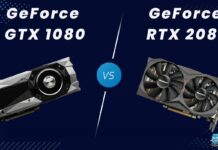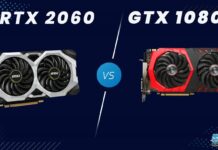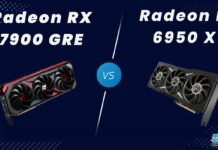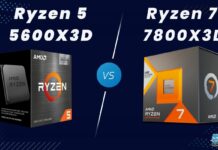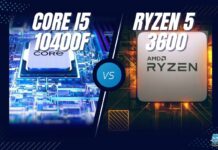Radeon RX 7600
Rated: 8/10
Radeon RX 6700
Rated: 8.2/10
Pros & Cons
| GPU | Pros | Cons |
|---|---|---|
| Radeon RX 6700 | ✅ HDMI 2.1 functionality ✅ Compact design with improved heat dissipation | ❌ Average ray tracing performance |
| Radeon RX 7600 | ✅ Flawless 1080p gaming ✅ Optimal performance with an 8-pin power connector | ❌ Ray tracing performance needs improvement |
- The RX 6700 exhibits a slight 0.6% advantage over the RX 7600 in terms of performance.
- The RX 6700 shows an impressive 6.4% lower average power consumption than the RX 7600. With a 5.5% more thermal advantage, 6700 is a clear winner.
- The RX 7600 cost about $269, while the RX 6700 was pricier at around $350, creating a 43% price difference.
- The RX 7600 is cheaper for basic 1080p gaming. The RX 6700 costs more but offers better performance and efficiency. Choose based on budget and gaming needs.
Comparison Table
| Technical Specs | Radeon RX 7600 | Radeon RX 6700 |
|---|---|---|
| Architecture | RDNA 3.0 | RDNA 2.0 |
| Transistors | 13,300 million | 17,200 million |
| RT Cores | 32 | 34 |
| TMUs | 128 | 144 |
| ROPs | 64 | 64 |
| Memory Bus Width | 128 bit | 160 bit |
| Memory Bandwidth | 288.0 GB/s | 320.0 GB/s |
Architectural Differences
- Process Node: The RX 7600, built on a 6nm process, outperforms the RX 6700, which utilizes a 12nm process.
- Clock Speed: In terms of boost clock speeds, the RX 7600 leads the way with a base clock of 1720 MHz and a boost clock of 2655 MHz, while the RX 6700 lags with a base clock of 1941 MHz and a boost clock of 2174 MHz.
- VRAM: Furthermore, regarding VRAM, the RX 7600 packs 8GB of GDDR6 memory, while the RX 6700 boasts a larger capacity of 10GB of GDDR6 VRAM.
- TDP: Additionally, in terms of thermal design, the RX 7600 operates with a lower TDP of 165W, while the RX 6700 has a slightly higher TDP of 175W.
AMD just extended its RDNA 3.0 lineup with a new inclusion of the RX 7600 in it. But how does it differ in performance compared to the previously released RX 6700? We already reviewed the RX 7600 but in this article, we will compare the RX 7600 and RX 6700 graphics cards to help you choose the right one for your computer. We’ll outline their differences and gaming performance.
Gaming Benchmarks
Let’s shift our attention from the technical specifications to the RX 7600 and RX 6700 gaming performance.
Testing Rig
- CPU: AMD Ryzen 9 5900X (Stock)
- Motherboard: Gigabyte B550 Aorus Master
- RAM: Patriot Viper LED DDR4-3600 16GB RAM
- SSD – XPG GAMMIX S70 BLADE 2TB NVMe
- PSU – ENERMAX REVOLUTION D.F. X 1050W
- CPU Cooler – Arctic Liquid Freezer II 420 – AIO Water Cooler
Spider-Man Miles Morales

- Right off the bat, I saw the RX 6700 performing 11.9% better in Spider-Man Miles Morales. On average, it provided 91 fps. Contrary to that, the 7600 was roughly 5 frames behind, giving us an average of 86 fps.
- 1% lows on the RX 7600 are at 73 FPS, while the RX 6700 had lows of 75 FPS.
Forza Horizon 5

- The RX 6700 dominates in Forza Horizon 5, providing 5.6% more frames and running the game at over 100 fps. While the RX 7600 at 96 fps did not disappoint me at all.
- This time, even its 1% lows are better than RX 7600. It was able to offer an average of 85 1% low fps. The RX 7600, on the other hand, had no chance of catching up as it maxed out at 69 fps.
Red Dead Redemption 2

- Both GPUs faced challenges in running Red Dead Redemption 2, but the RX 7600 outperformed the 6700 by 8.8%, delivering an average of 76 fps compared to the 6700’s 83 fps.
- I noticed that both GPUs have nearly identical 1% lows. The 7600 edges out the competition by a mere 1 fps, which isn’t surprising given the performance of the 6700.
Hogwarts Legacy

- For the Hogwarts Legacy, I saw that the RX 7600 runs at 71 fps, which is 4.3% better than the 6700’s 68 fps. But honestly, you won’t notice the difference in real life.
- The difference in 1% lows was slightly higher, in favor of the RX 7600. On average at 47 fps. The RX 6700, at the same time, was 12 frames behind, at 35 1% low fps.
Hitman 3

- In Hitman 3, using the slight 2.5% difference in average FPS performance, the RX 6700 surpasses the RX 7600 with 120 FPS compared to the latter’s 117 FPS.
- Results of the 1% lows were not too different from what I had seen previously, as the 6700 was still ahead. It managed to yield 85 1% low fps on average. The 7600 maxed out at 82 fps.
The Last of Us Part I

- Remarkably, In The Last of Us Part I, the RX 6700 exhibits a substantial 10.6% advantage over the RX 7600, delivering an impressive 79 FPS versus the latter’s 71 FPS in average FPS performance.
- The RX 7600 experienced slightly lower 1% lows, averaging around 56 FPS, compared to the RX 6700, which maintained lows of 61 FPS.
A Plague Tale: Requiem

- A Plague Tale: Requiem preferred the 7600 over the RX 6700, providing 2.7% more fps. On average, it provided 73 fps. The RX 6700, on the other hand, was seen struggling as it was 2 frames behind, averaging nearly 71 fps.
- Furthermore, the 7600 maintained its dominance with a 2-frame lead in 1% lows, averaging around 61 FPS, while the 6700 struggled at 58 FPS.
Cyberpunk 2077

- Finally, In Cyberpunk I noticed that the RX 7600 exhibits a 6.1% advantage over the RX 6700, delivering an average FPS of 67 compared to the latter’s 63.
- Similarly, Lead was taken by RX 7600 as its 1% lows were also slightly higher at around 54 FPS, while the RX 6700 had lows of 51 FPS.
Overall Gaming Performance
| Featured | Radeon RX 7600 | Radeon RX 6700 |
|---|---|---|
| Average FPS | 83 📈 | 87 📈 |
| %1 lows | 62 📉 | 65 📉 |
| Winner: AMD Radeon RX 6700 | ||
At 1080p, I observed that the AMD Radeon RX 6700 outperformed the AMD Radeon RX 7600 by approximately 0.6% in average fps. Based on my testing, the difference in the mean of 1% lows between both GPUs was slightly larger at around 4.6% in favor of the AMD Radeon RX 6700.
Power Consumption
| Game | RX 7600 Power (Watts) | RX 6700 Power (Watts) |
|---|---|---|
| Spider-Man Miles Morales | 156.2 | 166.5 |
| Forza Horizon 5 | 156.3 | 148.5 |
| Red Dead Redemption 2 | 166.2 | 150.6 |
| Hogwarts Legacy | 163.6 | 151.1 |
| Hitman 3 | 173.7 | 156.6 |
| The Last of Us Part I | 163.9 | 137.5 |
| A Plague Tale: Requiem | 158.2 | 148.3 |
| Cyberpunk 2077 | 159.5 | 154.1 |
| Average Power Consumption | 162.6⚡️ | 152.14⚡️ |
| Winner: AMD Radeon RX 6700 | ||
The overall power consumption of our system with the RX 7600 was approximately 162.6 watts, whereas, with the RX 6700, it averaged around 152.14 watts. The RX 6700 consumed 6.4% less power.
Thermal Statistics
| Game | RX 7600 (°C) | RX 6700 (°C) |
|---|---|---|
| Spider-Man Miles Morales | 65 | 62 |
| Forza Horizon 5 | 63 | 61 |
| Red Dead Redemption 2 | 69 | 60 |
| Hogwarts Legacy | 67 | 61 |
| Hitman 3 | 66 | 64 |
| The Last of Us Part I | 63 | 61 |
| A Plague Tale: Requiem | 67 | 60 |
| Cyberpunk 2077 | 67 | 62 |
| Average Temperature | 65.5 🌡️ | 61.88 🌡️ |
| Winner: AMD Radeon RX 6700 | ||
This slight thermal advantage of 5.5% suggests greater efficiency for the RX 6700, although both GPUs remained within safe operating limits and didn’t approach thermal throttling.
Price And Value
| Graphics Card | Launch MSRP | Current Price |
|---|---|---|
| RX 7600 | 💲269 | 💲259 |
| RX 6700 | 💲479 | 💲787 |
| Difference | 43% | 67% |
The RX 7600 was priced at approximately 269 USD, while the RX 6700 had a higher price point of around 350 USD. This resulted in a significant price gap of 43%. Now, there is a huge price difference of almost 67% between these two.
What Do We Recommend?
RX 6700: The RX 6700 outperforms the RX 7600 in gaming, has HDMI 2.1, and stays cool with its compact design. It uses less power and handles heat better. Plus, it’s priced lower for good value.
RX 7600: The RX 7600 is great for smooth 1080p gaming with its 8-pin power connector. It’s cheaper than the RX 6700 but might need better ray tracing. If you want a budget-friendly option for 1080p gaming, go for the RX 7600.
The RX 7600 is cheaper and good for basic 1080p gaming. The RX 6700 costs more but offers better gaming, power, and thermal performance. If you want better gaming and efficiency, go for the RX 6700. It all depends on your budget and gaming needs.
FAQs
The main difference lies in the foundation, as the RX 7600 utilizes the new RDNA 3.0 base, and the RX 6700 relies on the previous-gen RDNA 2.0 architecture.
The RX 6700 takes the lead in FPS performance with a small 0.6% advantage over the RX 7600.
The RX 6700 exhibits greater power efficiency, consuming approximately 8.3% less power on average compared to the RX 7600.
More from RX 7600:
Thank you! Please share your positive feedback. 🔋
How could we improve this post? Please Help us. 😔
[Comparisons Expert]
Abdemanaf is a skilled creative writer who has been honing his craft since 2011. While initially working in different fields, he found a passion for technology and has been exploring the tech world since early 2015. Over the years, he has developed an in-depth knowledge of the latest tech trends and product offerings by various companies.
Abdemanaf’s writing reflects his analytical mindset and ability to think critically. He has a knack for breaking down complex technical information into easily digestible pieces, making his articles engaging and accessible to readers from all backgrounds. In February 2022, he joined Tech4Gamers as a blog and product comparison writer, where he has been able to hone his skills further.
As a writer, Abdemanaf is dedicated to staying up-to-date with the latest technological advancements and trends, enabling him to provide readers with the most relevant and accurate information. He is always eager to learn more and is constantly seeking new challenges to improve his skills.
Get In Touch: manaf@tech4gamers.com


![GPU Comparison Template [NEW]](https://tech4gamers.com/wp-content/uploads/2023/06/GPU-Comparison-Template-NEW-1068x580.jpg)
